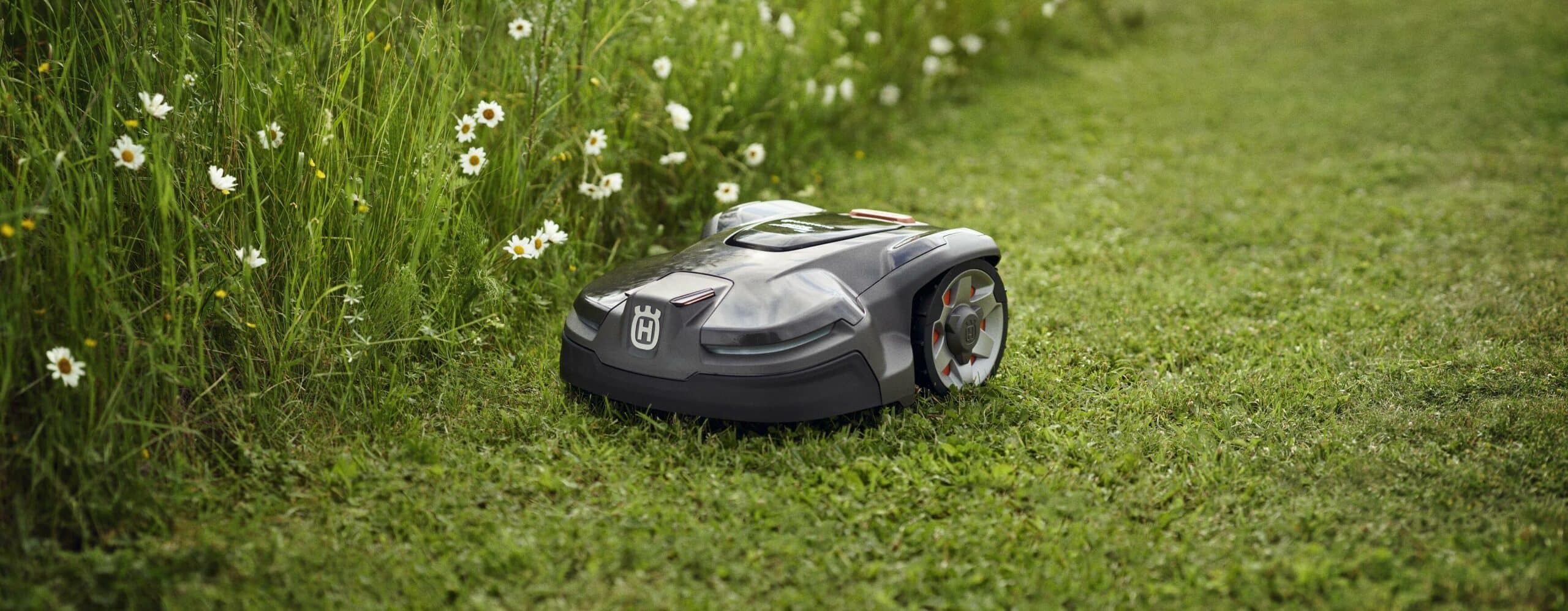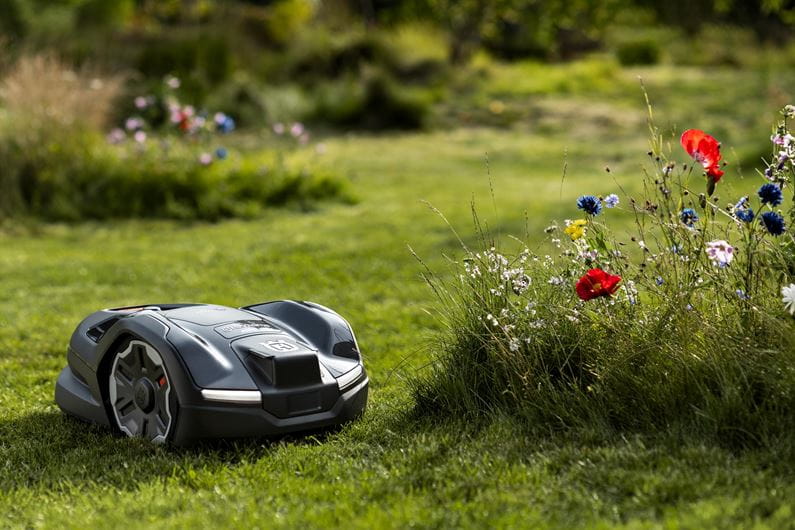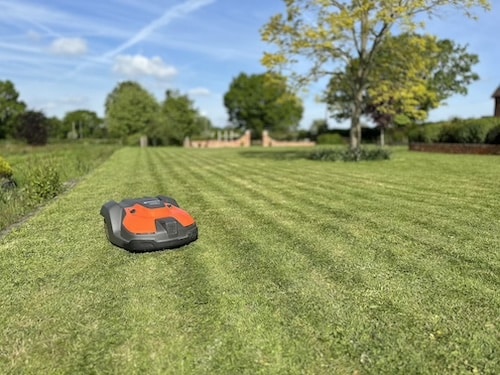Robot lawnmowers have become increasingly popular among homeowners. They are a convenient and efficient way to maintain a well-manicured lawn without spending countless hours mowing. However, concerns have been raised about the impact of robot mowers on animals, particularly bees, hedgehogs and other insects. In this blog, we’ll explore how to create a bee- and hedgehog-friendly garden while still benefiting from the advantages of a robot lawn mower.
Create enough food sources
Bees play a critical role in pollination in our ecosystem, and as such, it’s essential to ensure they have sufficient food sources. Unfortunately, the ever increasing use of fertilisers, pesticides, and the reduction of food sources have all contributed to the decline of bee populations. Therefore, it’s important to create enough food sources for bees and other insects to thrive.
One way to do this is by planting a wildflower meadow. Wildflowers are an excellent source of nectar and pollen for bees and other insects. A seed mixture for a bee-friendly flower meadow is readily available in most eco-stores, and using a universal spreader will allow for even distribution. Planting bee-friendly perennials and fruit trees, including ivy and wine, are also excellent options. Selecting plants that bloom at different times of the year will ensure that bees have food throughout the year.

Creating an herb bed is another way to provide food for bees. Rosemary and lovage are spring bloomers that provide food from March to May, while coriander and sage offer food in the summer months. Thyme and lavender are great for late-autumn blooms, making it an excellent food source for bees throughout the year.
By providing food sources for insects and arachnids, you automatically create a food source for larger insects and small animals, such as hedgehogs. In turn, hedgehogs feed on insects, including snails, making them a vital part of the ecosystem.
Create retreats
While a well-manicured lawn is aesthetically pleasing, it doesn’t offer any retreat for animals. By creating retreats for animals, you can help to support local wildlife. Hedges, bushes, and shrubs are already an excellent retreat for hedgehogs and insects. However, you can go one step further by building a self-made insect hotel or hedgehog house. It’s best to place these retreats near bushes or hedges where animals feel safe.
It’s essential to ensure the material used to build these retreats is suitable for the animals. It’s also worth considering using garden waste, such as piled leaves, as a shelter for hedgehogs. Hedgehogs like to spend the winter in these hiding places. Before disposing of green waste or piles of leaves, check whether there are hedgehogs or other small animals in the garden.
Avoid weed killers
Whilst robot mowers provide a free organic way of fertilising your lawn, the use of pesticides and other chemical substances in the garden can harm bees and other insects. Natural alternatives such as pine needles can provide snail protection. Nettle slurry is a natural and effective replacement for chemical fertilisers and pest control. It’s evenly distributed using a cordless pressure sprayer.
Is it possible to have the best of both worlds?
A well-maintained lawn and an animal-friendly garden aren’t mutually exclusive. It’s possible to have a bee and hedgehog-friendly garden while still using a robot lawn mower. Firstly you can schedule your robot mower to operate in the daytime and avoid the nocturnal hours. Secondly, by creating enough food sources for bees and other insects and creating retreats for animals, you can help support local wildlife. Thirdly by avoiding weed killers and other chemical substances in the garden, you can ensure that your garden is a safe haven for bees and other insects.



